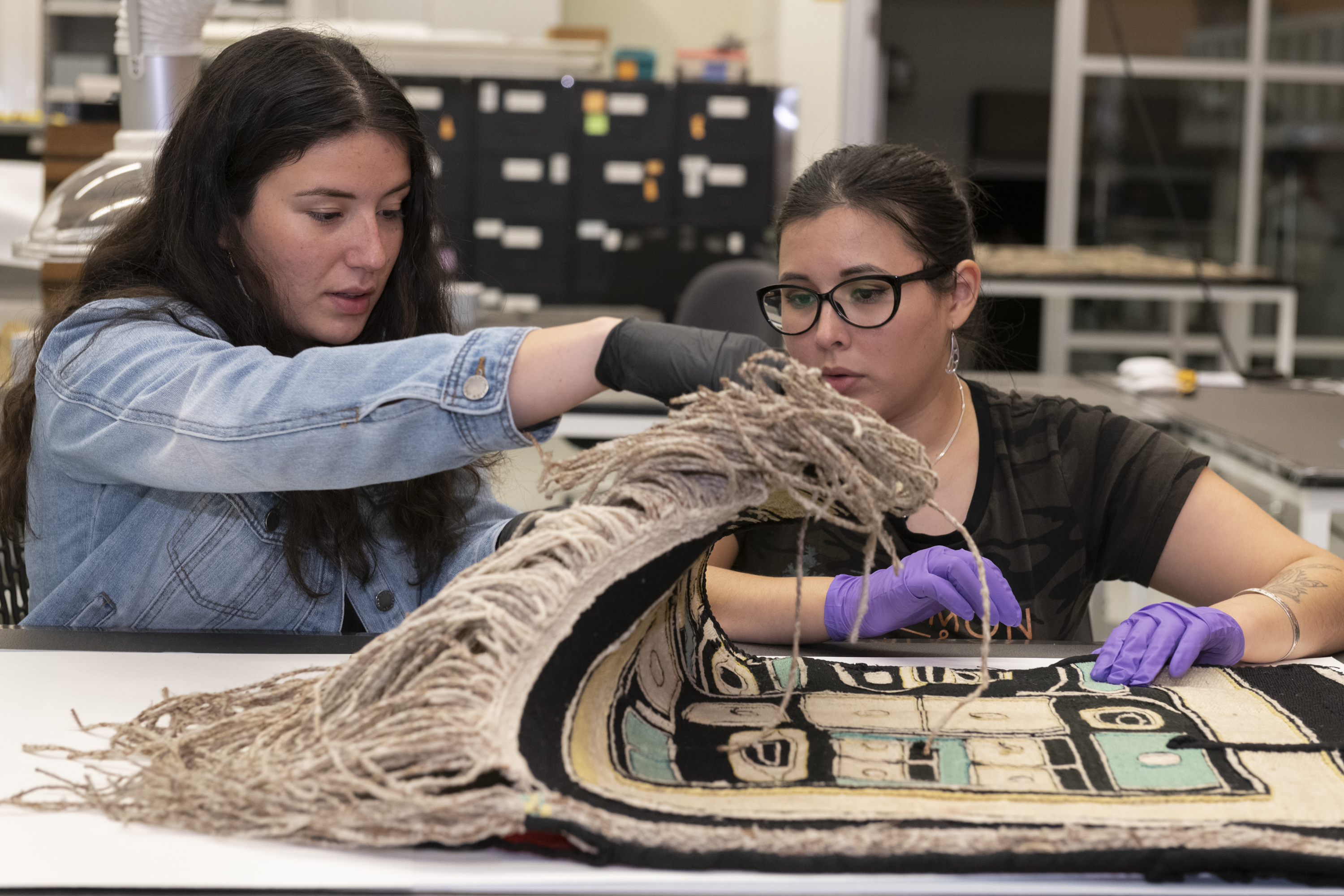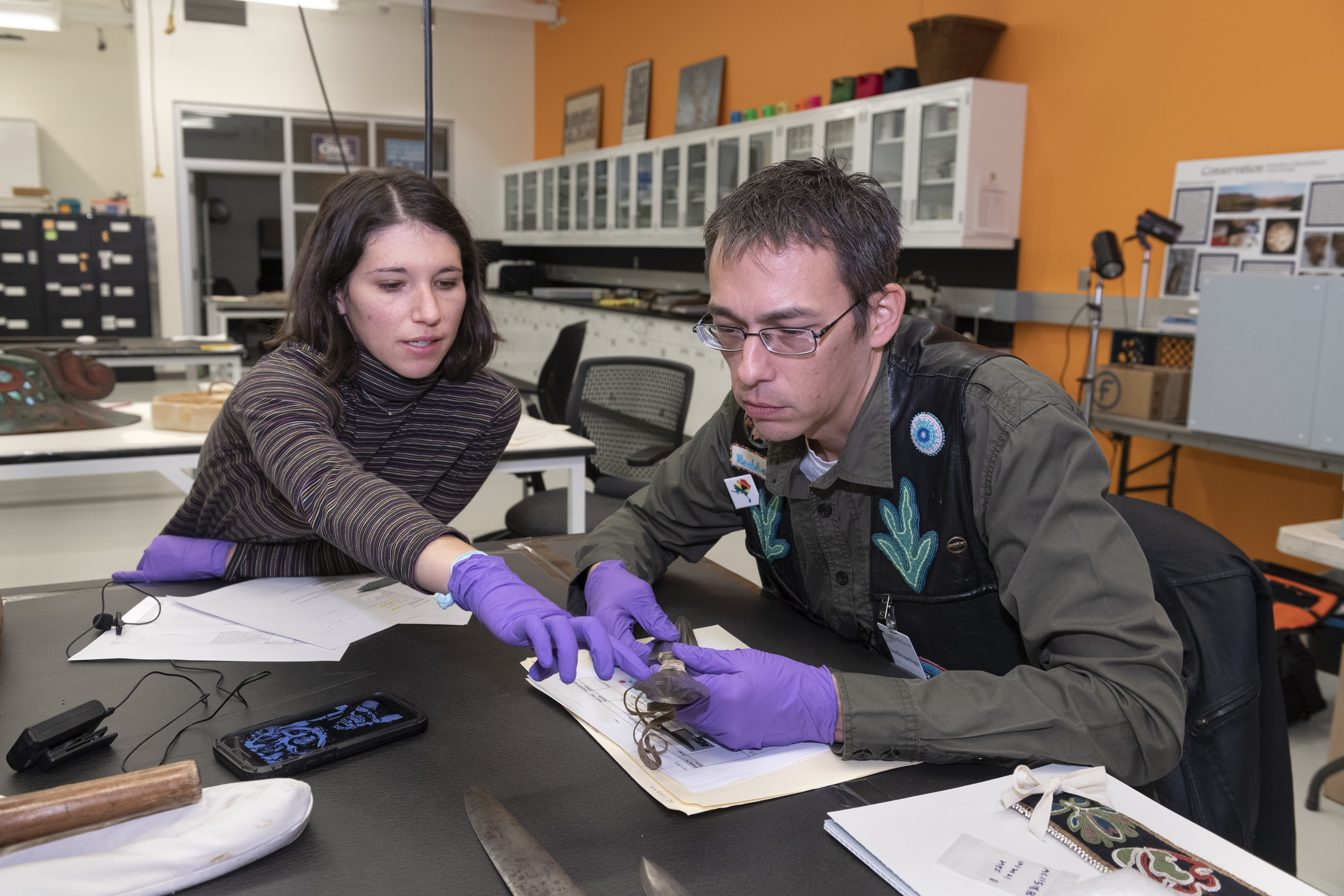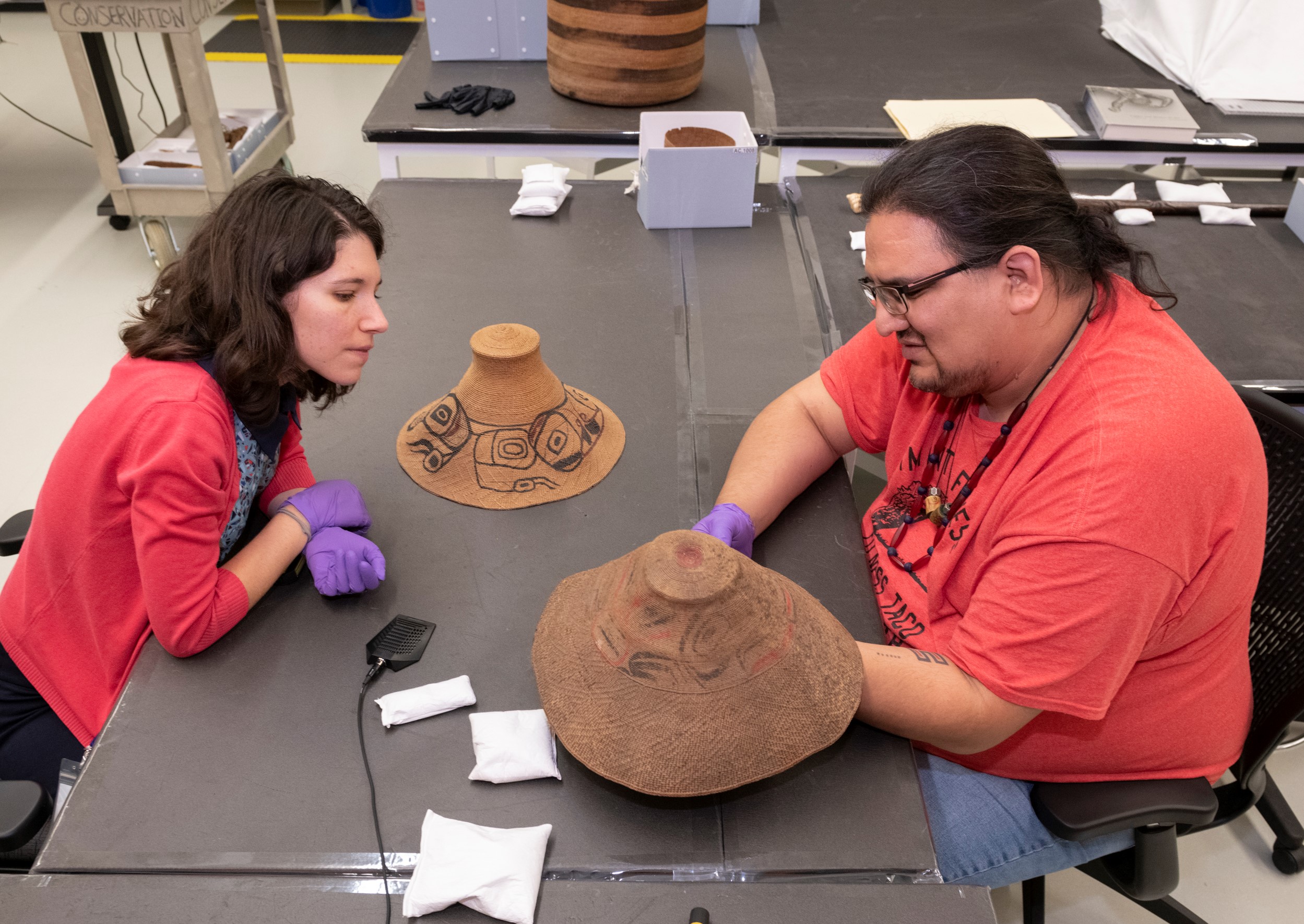Dec. 14 will remain an important anniversary in the Museum’s history for decades to come.
On Dec. 14, 2021, your Museum received an unprecedented $25 million gift that will vastly enhance, expand and perpetuate our work to conserve collections and cultural knowledge. Building on the Museum’s decades-long foundation of objects conservation, this gift will take the Science Division in exciting new directions while honoring the anonymous donor’s passion.
The gift comes to the Museum in two parts. The first is a $22.5 million endowment that will distribute more than $650,000 per year, starting in 2023. The second part is $2.5 million that enables the Museum to prepare for the expansion and initiate key activities even before the endowment begins to distribute.
Funds will support a wide variety of conservation-related activities. With additional personnel, equipment, software, training and facility improvements, much of the near-term work will focus on preserving the Museum’s collections and exhibitions that contain catalogued objects and specimens, and digital asset management.
Collections in the Museum’s world-class historic dioramas, for instance, have yet to be properly inventoried and protected. The new gift will allow us to make key facility improvements to better protect its collections (e.g., from humidity changes and UV light), and hire a conservator to care for objects and specimens that are on display, or that are rotating off display when a renovation is taking place. That conservator can also work on the many traveling exhibitions that we host that contain collections, including blockbusters such as “Egypt: The Time of Pharaohs.” Also on the collections front, we will purchase cryogenic freezers in which to preserve DNA samples in the Zoology collection.
So much of recent and current work by Museum scientists is digital, but curation and conservation of those assets presents a daunting challenge for many institutions. Fortunately, this gift will ensure that our Museum can properly care for these digital assets.
While many projects and priorities (some of which we have yet to imagine) will be determined in the months and years to come, we know that inclusive conservation that takes place in collaboration with source communities will guide our work. Toward that end, the team is already researching best practices and recruiting an advisory panel with expertise in conservation science, Indigenous cultural heritage and museums.

Native American Science Intern Marlo Wylie Brillon and representative from Haida Gwaii Raven LeBlanc, both of the Haida Nation in British Columbia, examine a Tlingit Chilkat dance shirt as part of the Museum’s Institute for Museum and Library Services conservation grant in 2021.

The Museum’s conservation lab opened in the mid-1990s during a renovation of the Native American Indian Cultures Hall. At that time, and in the decades since, the Museum followed a time-honored approach to objects conservation—performing minimally invasive treatments in order to stabilize priceless objects.
In 2019, Conservator Emerita Jude Southward worked with Chip Colwell, then curator of anthropology, to secure a collections stewardship grant from the Institute for Museum and Library Services (MA-245839-OMS-20). Supported by this grant, the Museum is reviewing the conservation needs of our Northwest Coast Indigenous collection in collaboration with artists, elders and knowledge keepers from five Tribes and First Nations (Tlingit, Haida, Nuu-chah-nulth, Makah and Kwakwa̱ka̱ʼwakw). This project is one example of how the Museum is engaging in culturally inclusive conservation that takes into account, and indeed prioritizes, source community perspectives.

Tlingit representative Naakil.aan Hans Chester and Objects Conservator Megan Salas examine a steel dagger catalogued as Tlingit as part of the Museum’s Institute for Museum and Library Services conservation grant in 2021.
This $25 million gift will allow us to take this work to another level entirely. It positions your Museum to play a leading role in the worldwide effort to engage source communities in decisions about how to care for objects in Western museums. It builds on more than 15 years of work by the department of anthropology to engage in collaborative work with Indigenous groups in the American Southwest, Kenya, Peru and elsewhere. And it will allow us to hire conservation professionals, train future conservators, equip a state-of-the-art conservation lab and advance the Museum’s priorities and initiatives as they relate to conservation.

Representative from Haida Gwaii, British Columbia Aay Aay Hans (Skidegate Haida) and Objects Conservator Megan Salas examine spruce root hats cataloged as Haida as part of the Museum’s Institute for Museum and Library Services conservation grant in 2021.

ICYMI
Tiny the Torosaurus Staying through May 2
The skeleton of Tiny the Torosaurus—discovered in Thornton, CO, in 2017—will remain on display at the Museum through May 2. If you haven’t had the opportunity to see this impressive specimen, you’ll find it on the second floor of the Museum between the IMAX theater and the wildlife hall.